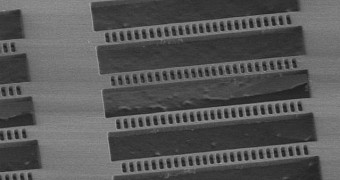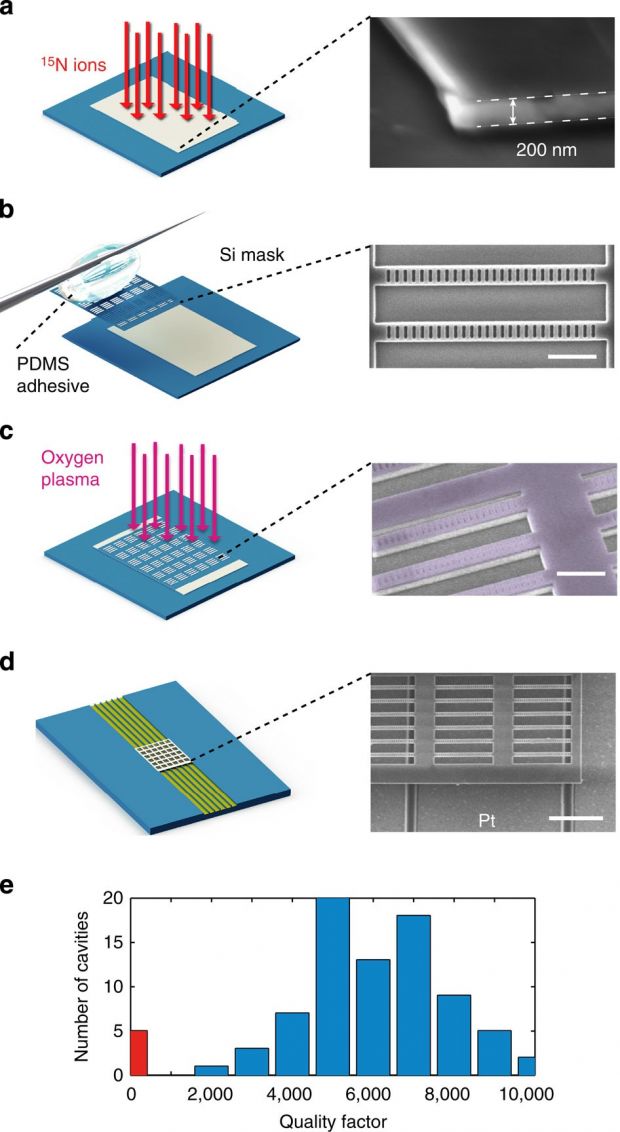Though it's an understated fact, it's quite widely accepted that we need to master Quantum Computing before we have any chance of developing a self-aware computer intelligence. Thus, any breakthrough in that field warrants attention.
Quantum computers promise exponential speed bumps on some computational problems, thanks to a qubit's ability to represent both 0 and 1 at once, instead of how classical computers have bits set on one or the other. This means that quantum computers can solve more than one problem in parallel.
So far, demonstrations of quantum computing have relied on atoms trapped in magnetic fields, but vacuum made things overly difficult.
Thus, current research avenues are trying to surround them in solids, preferably transparent ones so that light can travel in and out. Holding an atom in vacuum is difficult.
But "superpositions" of quantum states are very difficult to maintain even when a particle is trapped successfully.
Not anymore. And what do we have to thank for the greatest improvement ever achieved in this field? Diamonds apparently.
MIT and Element Six figure out the solution
Previously, devices using nitrogen vacancies inside optical resonators allowed superposition to last only a microsecond or two.
However, in bulk diamond, the superposition state lasts for almost a second in theory, using the same nitrogen-vacancy qubits. Such was the discovery of a team of researchers from MIT, Brookhaven National Laboratory and the synthetic-diamond company Element Six.
The new device embeds nitrogen atoms in synthetic diamond. The atoms located next to gaps in the diamond crystal lattice produce the "nitrogen vacancies," which enable researchers to optically control the magnetic orientation of individual electrons and nuceli.
This electron spin can be up, down, or a superposition of the two. Obviously, the latter was the goal, and it has been achieved.
Alas, there is one problem: to communicate with one another, nitrogen-vacancy qubits need to be able to transfer information via photons (particles of light).
This needs the vacancy to be positioned inside an optical resonator, which temporarily traps photons. Due to the nature of the process and inevitable imperfections with the current test model, this hits the potential superposition state duration. Still, the design can keep a quantum superposition state going for up to 200 microseconds, which is still a huge leap.
It still takes miliseconds to establish entanglement between two qubits, which is too long, but compared to the minutes of previous systems, it's a great advancement.
The new device and how it was made
Element Six made a 5-micrometer-thick wafer of synthetic diamond with nitrogen atoms embedded in it at regular intervals.
MIT researchers then used an oxygen plasma to reduce the diamond's thickness to only 200 nanometers. After that, they had to develop a new technique to affix silicon membraned etched into ladder patterns to it, since the diamond fragments were too small for existing methods.
That done, the structures were placed on a chip using a tungsten atomic probe with a slightly sticky drop of silicone at its tip. The material stayed free of defects and sustained spin coherence thanks to using a hard mask instead of a focused-ion beam.
The number of entanglement, quantum repeaters, or quantum memories within a distributed network will increase the better the production technology becomes, effectively increasing the processor "clock" equivalent.
What this means for us
Not quantum computers for the foreseeable future, but yes to unlimited-range quantum-secured communication links that are currently limited to 100 miles / 160 km.

 14 DAY TRIAL //
14 DAY TRIAL // 

